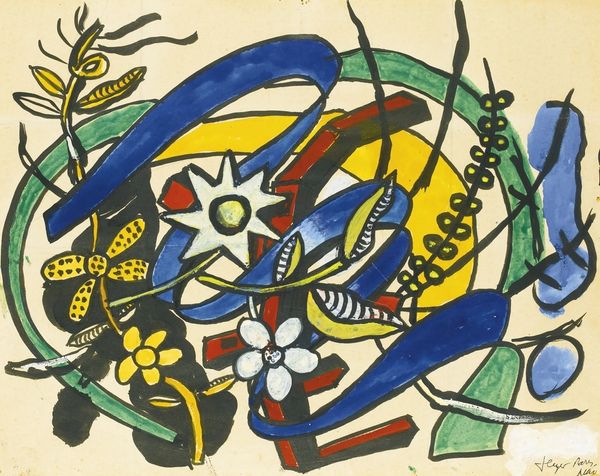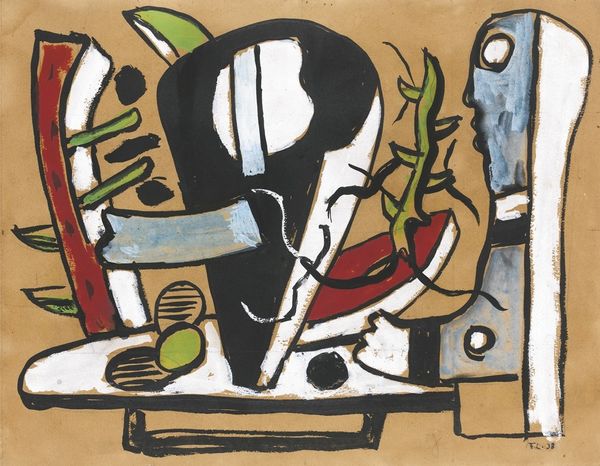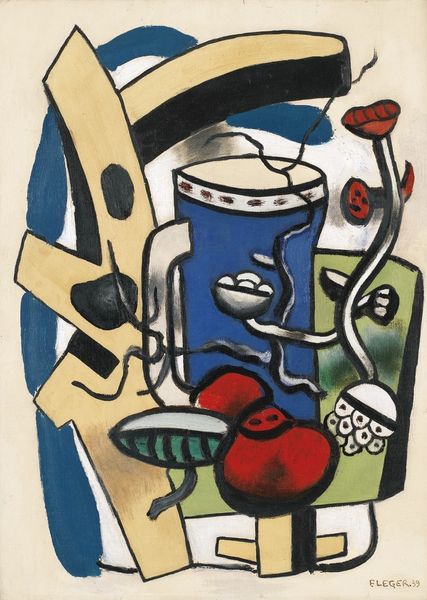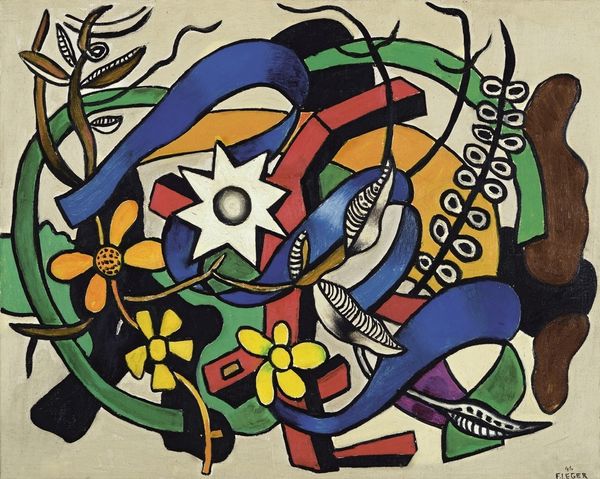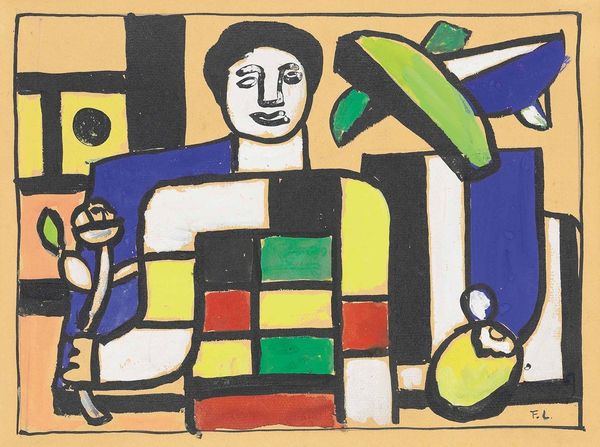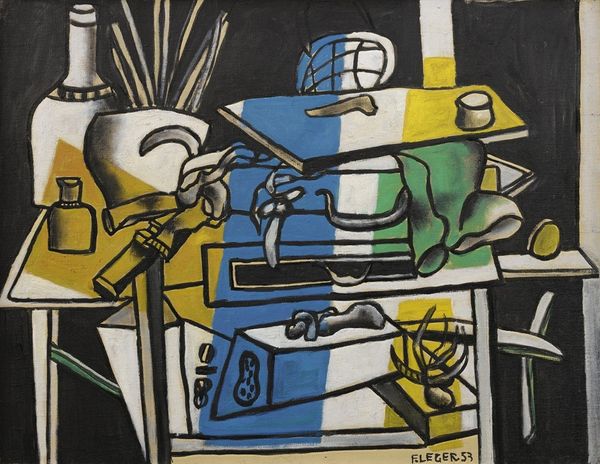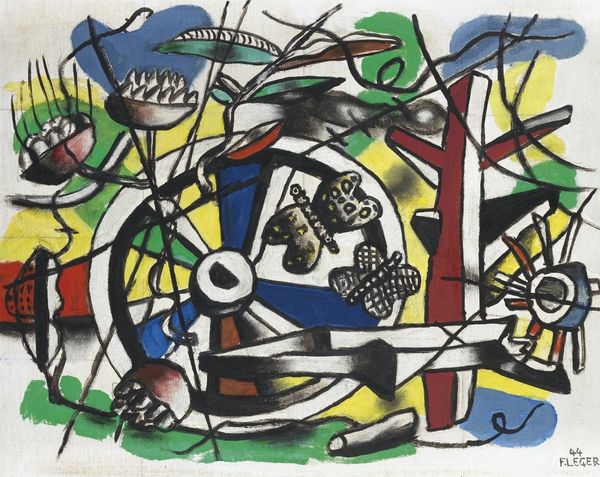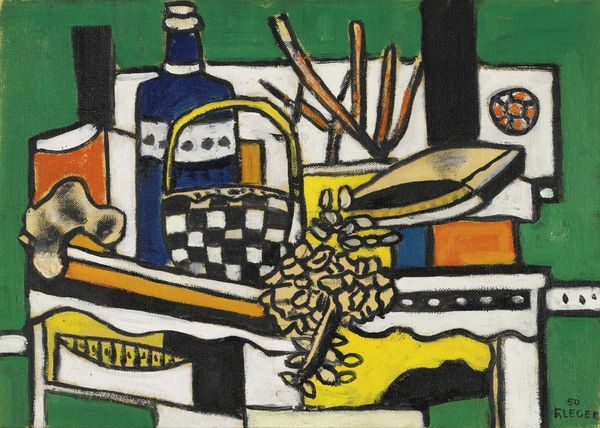
Copyright: Modern Artists: Artvee
Curator: Here we have Fernand Léger’s "Un sac polychrome et des fleurs", or "A Polychrome Bag and Flowers," completed in 1952 using oil on canvas. The image radiates with bold colors against a deep red backdrop. Editor: It’s striking. Almost playfully chaotic, isn't it? The juxtaposed forms and jarringly bright palette—the primary colors, especially—feel so deliberate. There’s an immediate sense of something industrial meeting something natural, clashing in a fascinating way. Curator: Yes, Léger was deeply influenced by industrial landscapes. Notice how he renders the forms; everything's simplified into cylinders, cubes, and strong lines, reminiscent of machine parts. Even the flowers feel geometric! These basic shapes and the flat colors can suggest a connection between humankind and mechanical progress. Editor: It makes me think about post-war reconstruction and the optimism around technology. Léger created this work a few years after returning to France from the United States, after all. I'm curious about the bag—does its presence offer any clues? Its abstraction could reflect the rapidly shifting social fabric of the time. Curator: Perhaps. The bag as a symbol of travel, movement, the every-day object elevated—it reflects modernity, mobility. Léger was fascinated by common, ordinary items. His visual language of contrasts – curved and straight lines, vivid colors set against blacks and whites - mirrors a world constantly in flux. This also mirrors a long-standing art-historical symbol about vanitas. Editor: But could we also read the stark, almost cartoonish, rendering of objects in this light of burgeoning consumerism? The flowers could also speak of ecological impact on natural beauty and resources with expanding industry and technological growth, couldn't they? This could reflect an ever-relevant call to reconcile economic advance and stewardship. Curator: That's a valuable perspective! It highlights the ongoing tension between advancement and potential exploitation. I find how Léger embraced popular culture striking – a kind of celebration through a formalized language. Editor: I agree. Léger asks us to consider this very intersection: nature versus the artificial; function versus aesthetic; what are these tensions telling us about our shared story? Curator: Yes, reflecting on shared humanity amidst progress is, after all, evergreen. Editor: Ultimately, isn't all art like that "polychrome bag"? Full of the tools we need to interpret and reshape our futures?
Comments
No comments
Be the first to comment and join the conversation on the ultimate creative platform.


